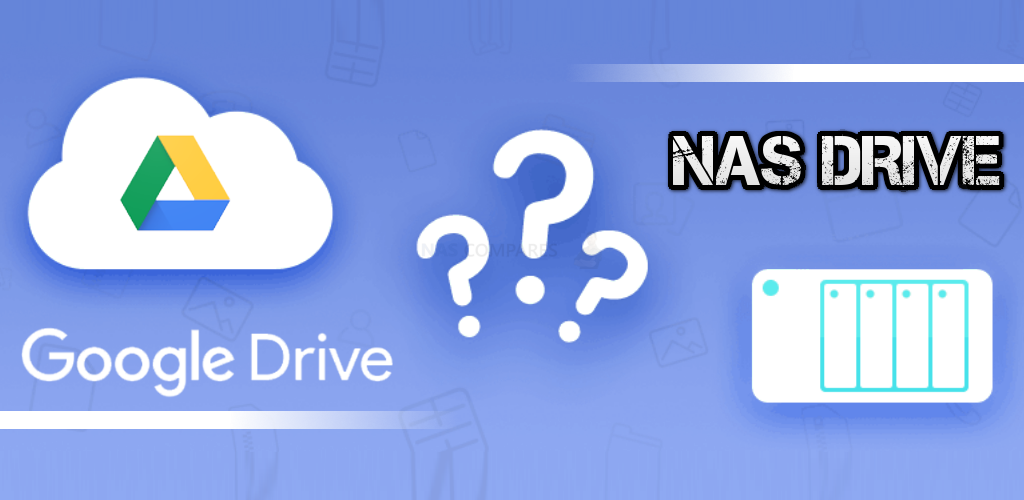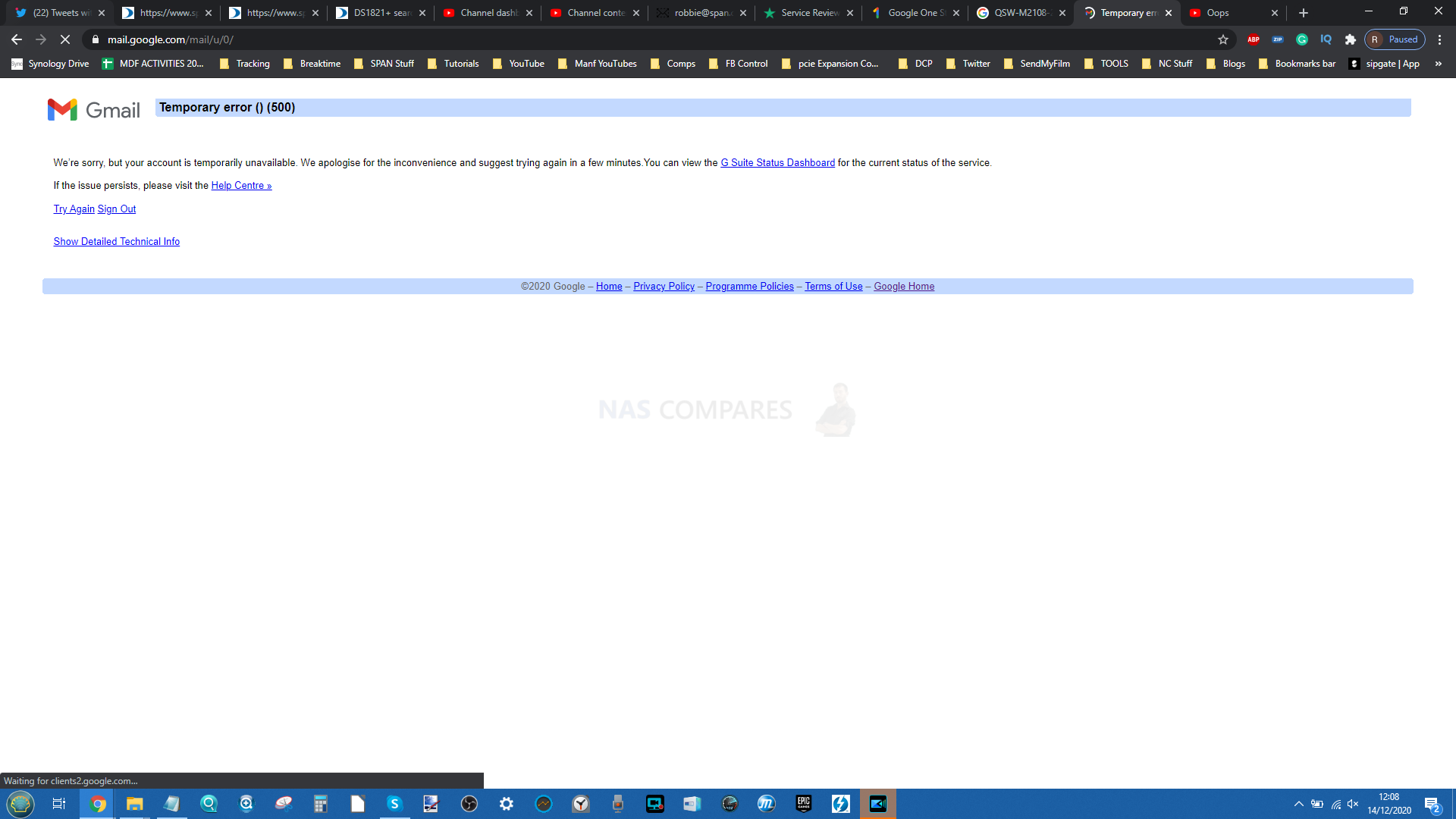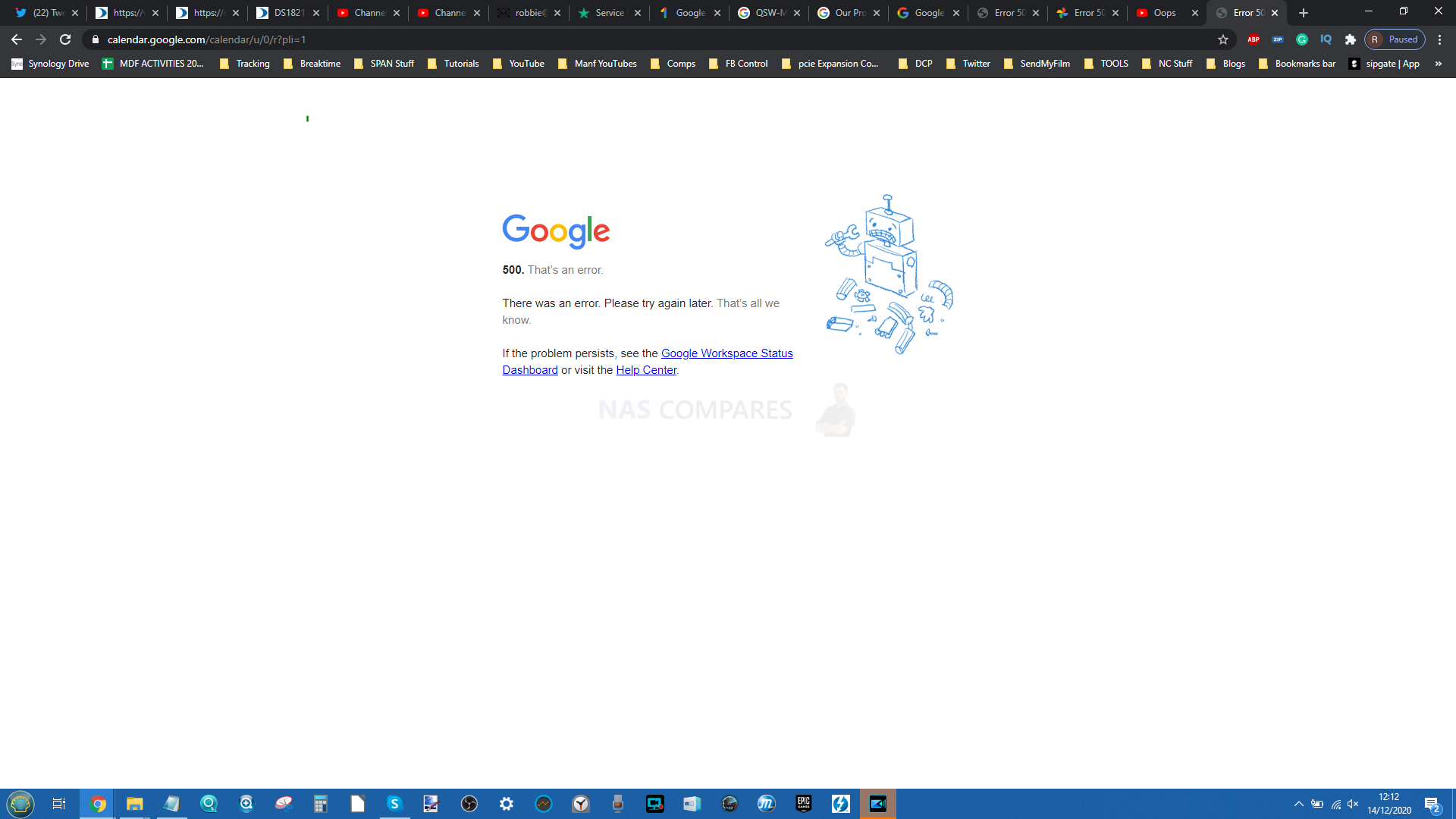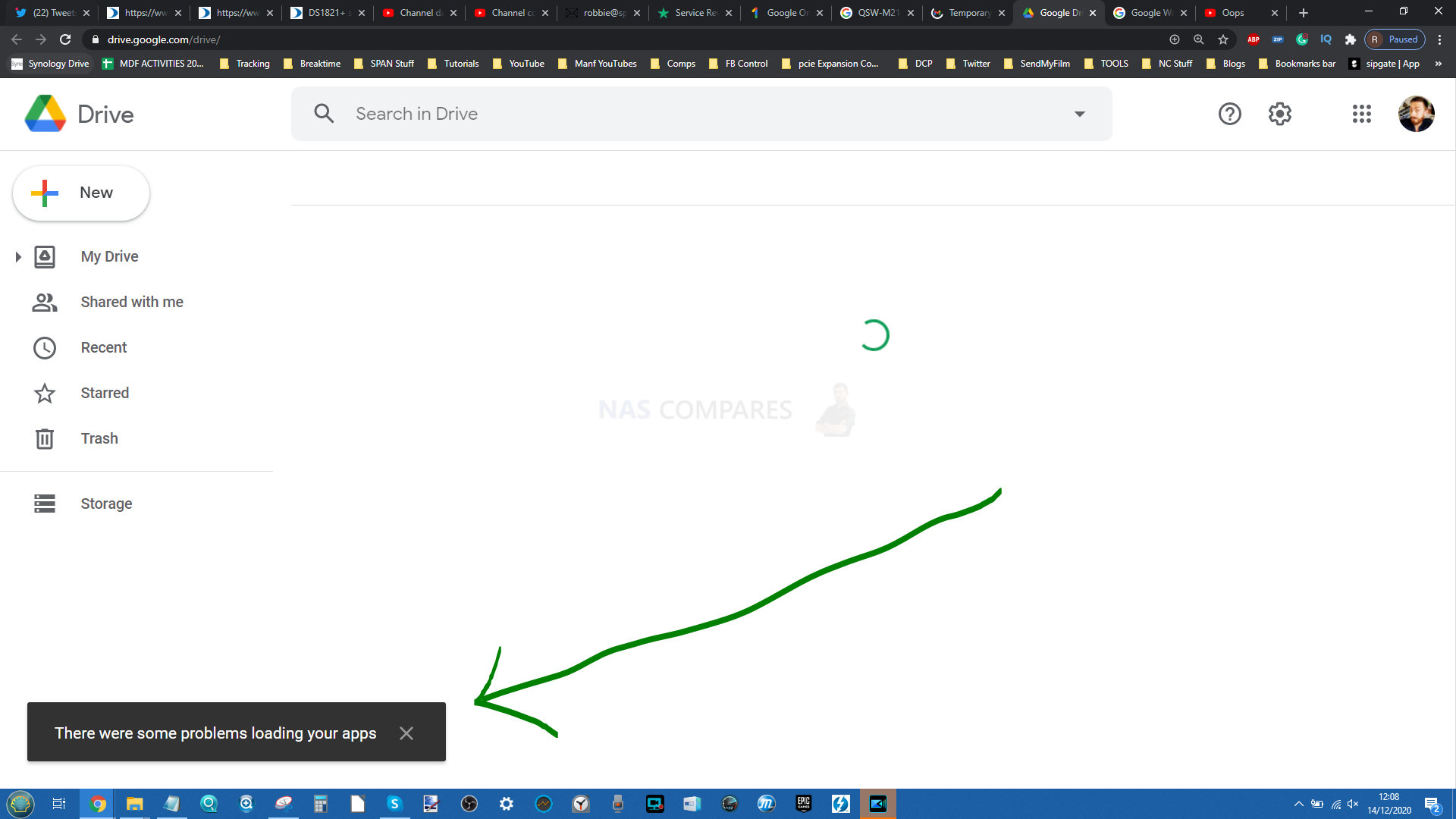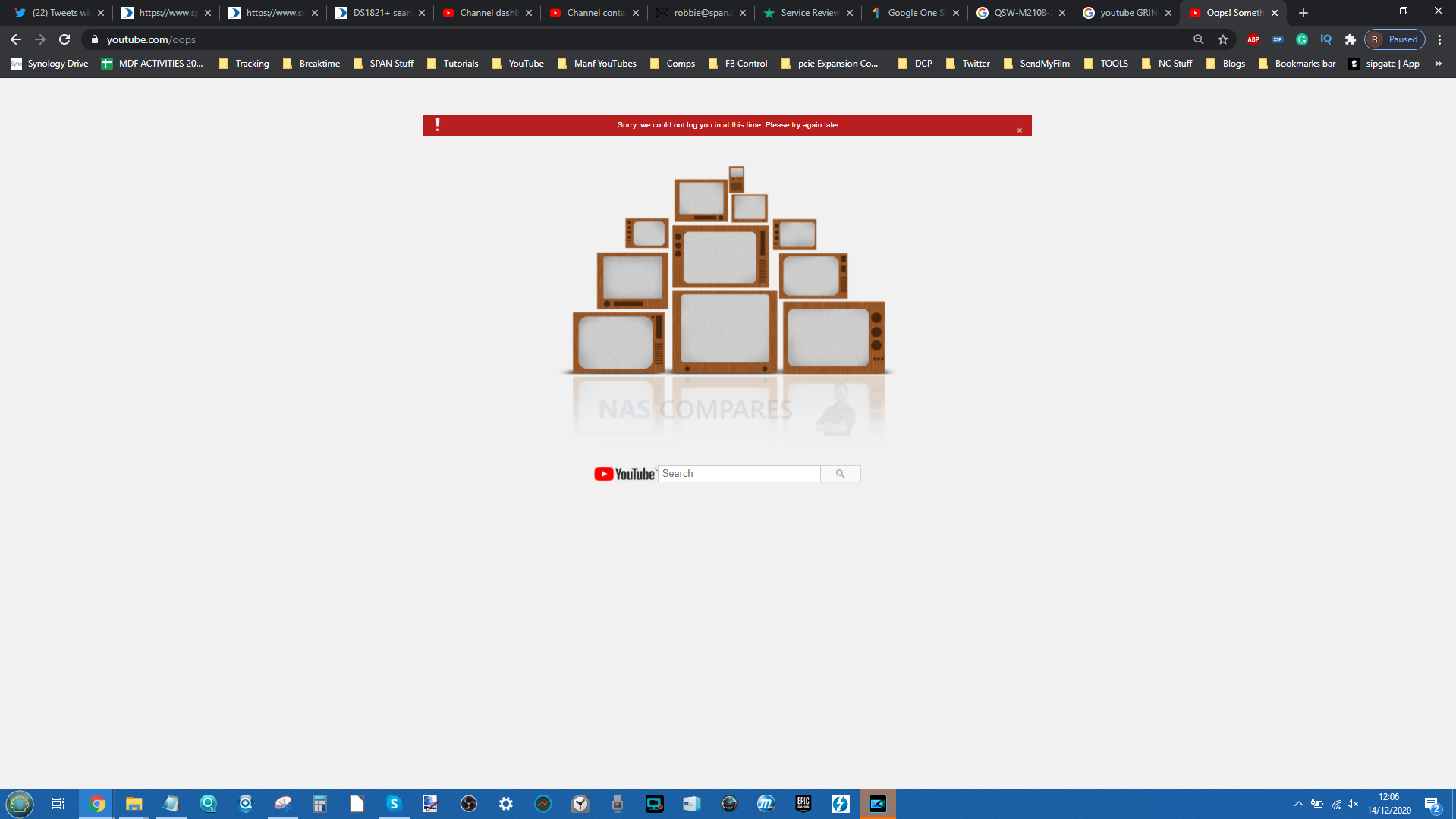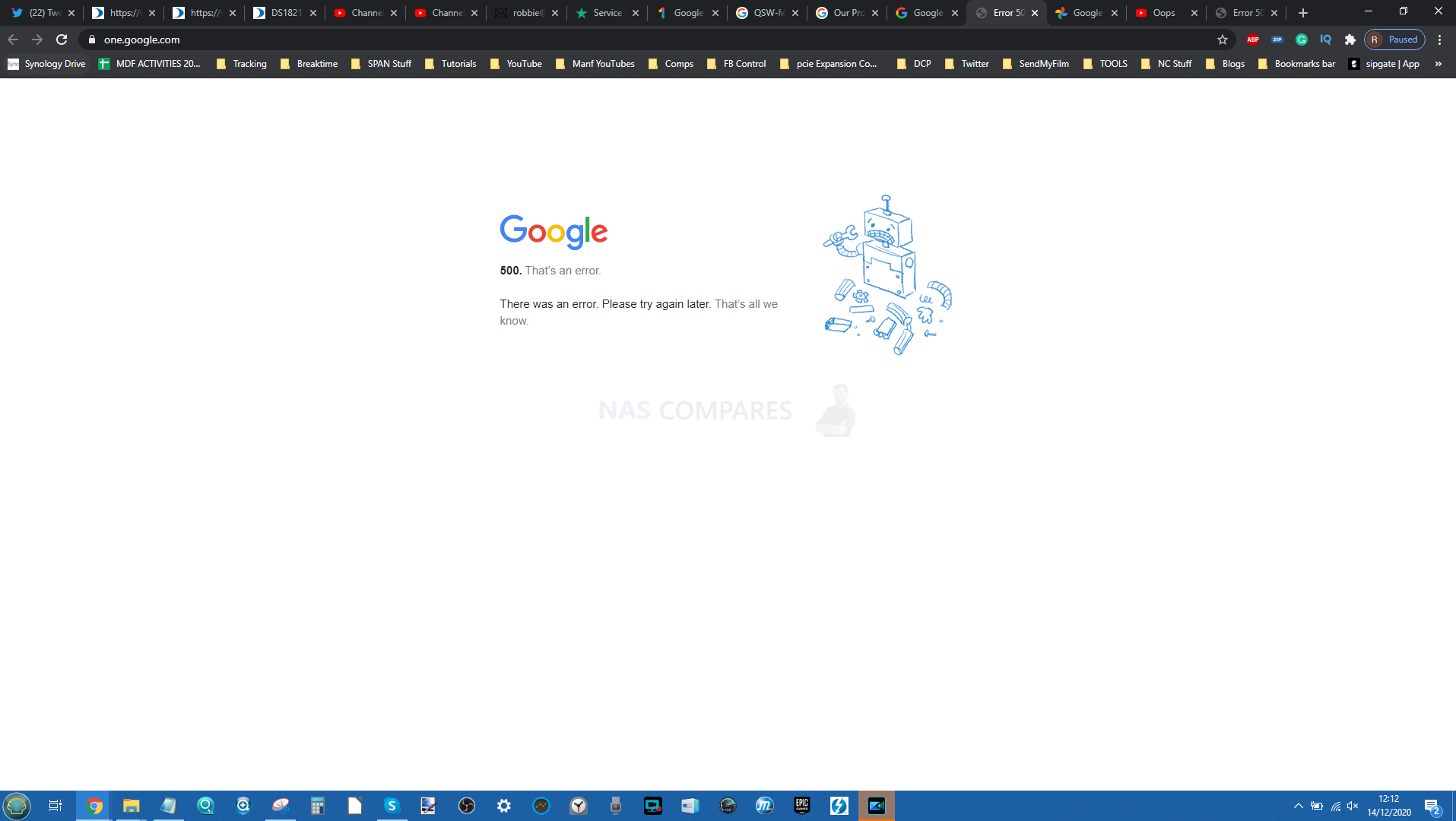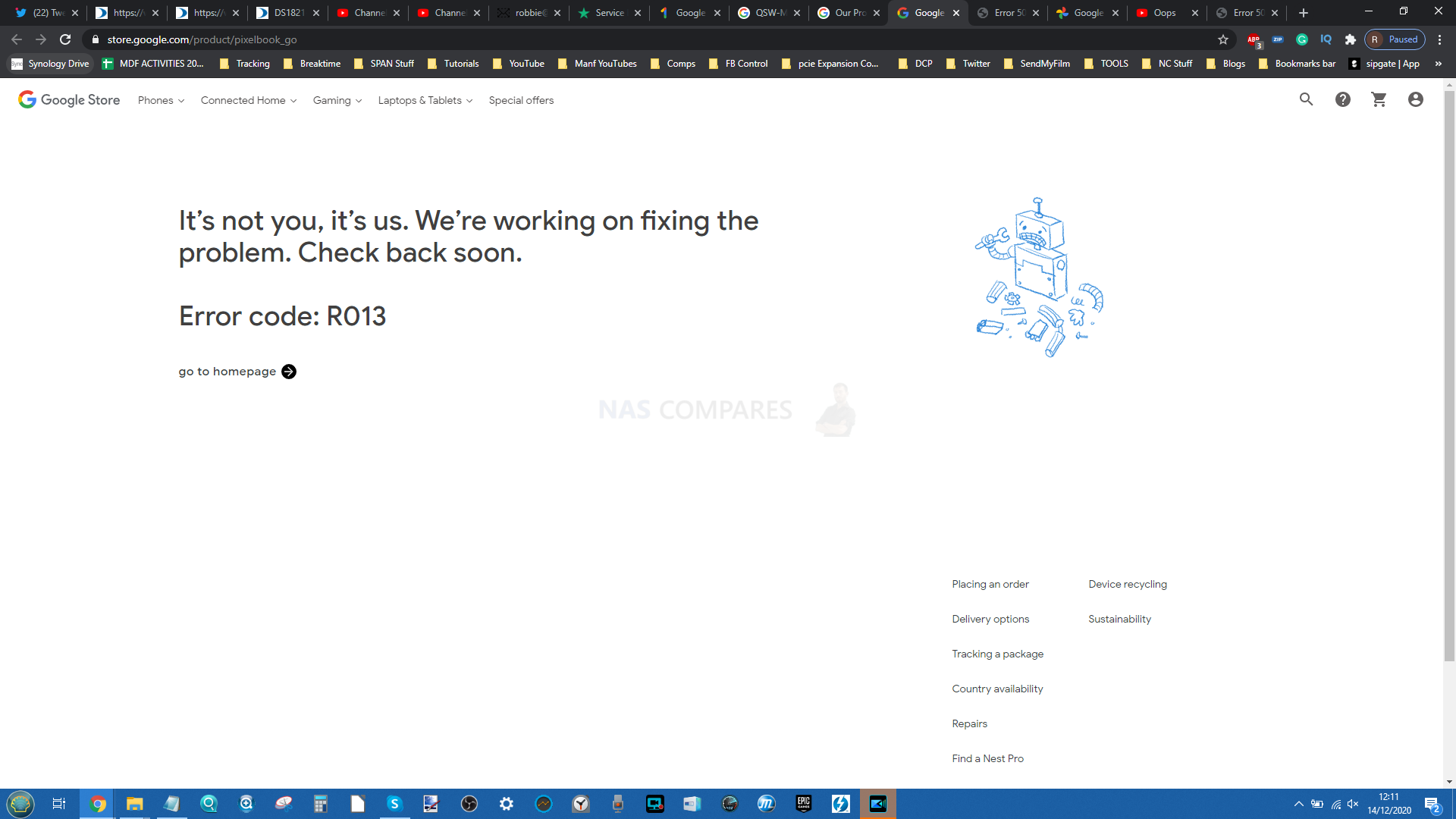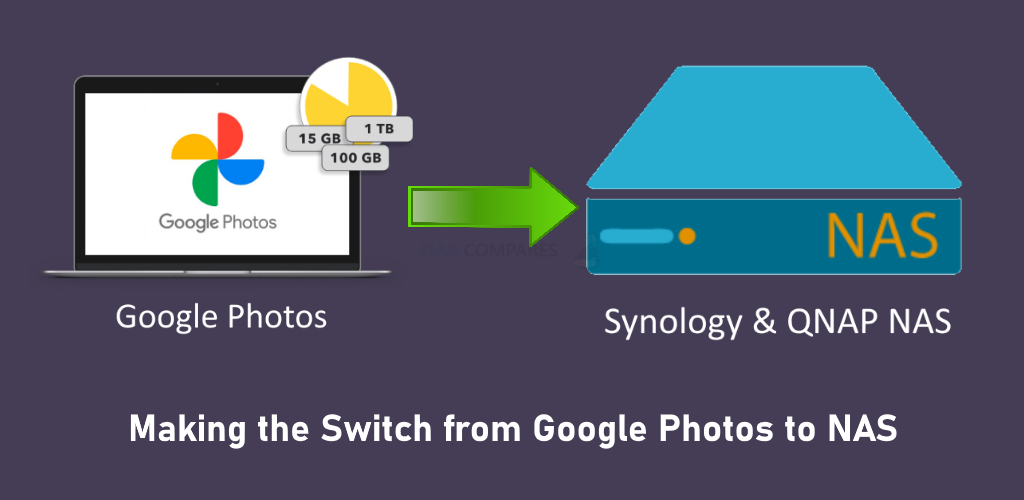Quitting the Cloud – Are You Ready for NAS?
Let’s all be honest for a second – google services are actually pretty bloody good! From the ease and carefree use of GMAIL and Google Docs to exchange messages and documents, to the sharing of videos on YouTube and relative ease of Google Drive – it is also convenient! Making the move away from public cloud services such as Google Cloud, OneDrive and DropBox is actually something that we don’t really consider, as we take for granted that these services are always just ‘there’ when we need them. In fact, unless you are a business owner who needs ultimate control and privacy of their data, or someone who needs their data accessible over the network (not the internet), most users cannot envision the idea that they cannot just hop online and access the range of Google services. So, that was why on the 14th December 2020, many were suddenly surprised to find they had completely lost access to EVERYTHING. In fact, coverage of the Google Outtage on BBC News (found here- https://www.bbc.co.uk/news/technology-55299779) went on detail how this affected a number of business users who have come to depend on the google range of shared drive services (included Google Docs, Sheets, Slides, Photos, etc) suddenly having zero access to their data AND no copies in-house – as all of those backups were on the cloud. Later that same day, google took to Twitter to highlight this matter, how it was resolved and give a tiny bit more information on the matter. Here’s that tweet:
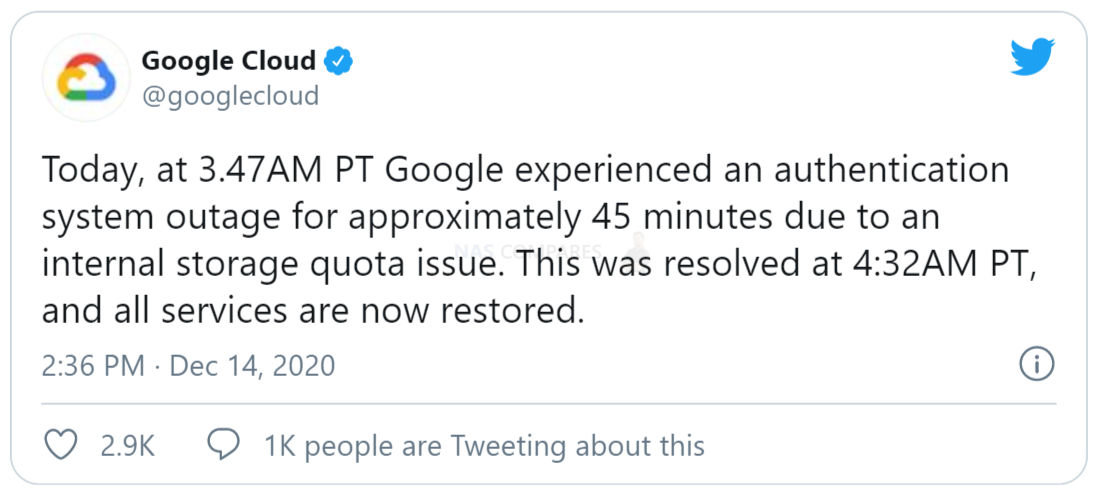
Now, many immediately shared the same initial thought – first off, no apology there! Users worldwide had no means of accessing their services (both paid and Free subscriptions) and they were later being given a rather weak response, but also no real apology. Of course, the real takeaway here is that many of us take for granted that the 3rd party cloud services we use regularly will always be there. In fact, the impact of the outage was felt in a number of ways, with those using google smart home products suddenly feeling a tad insecure:
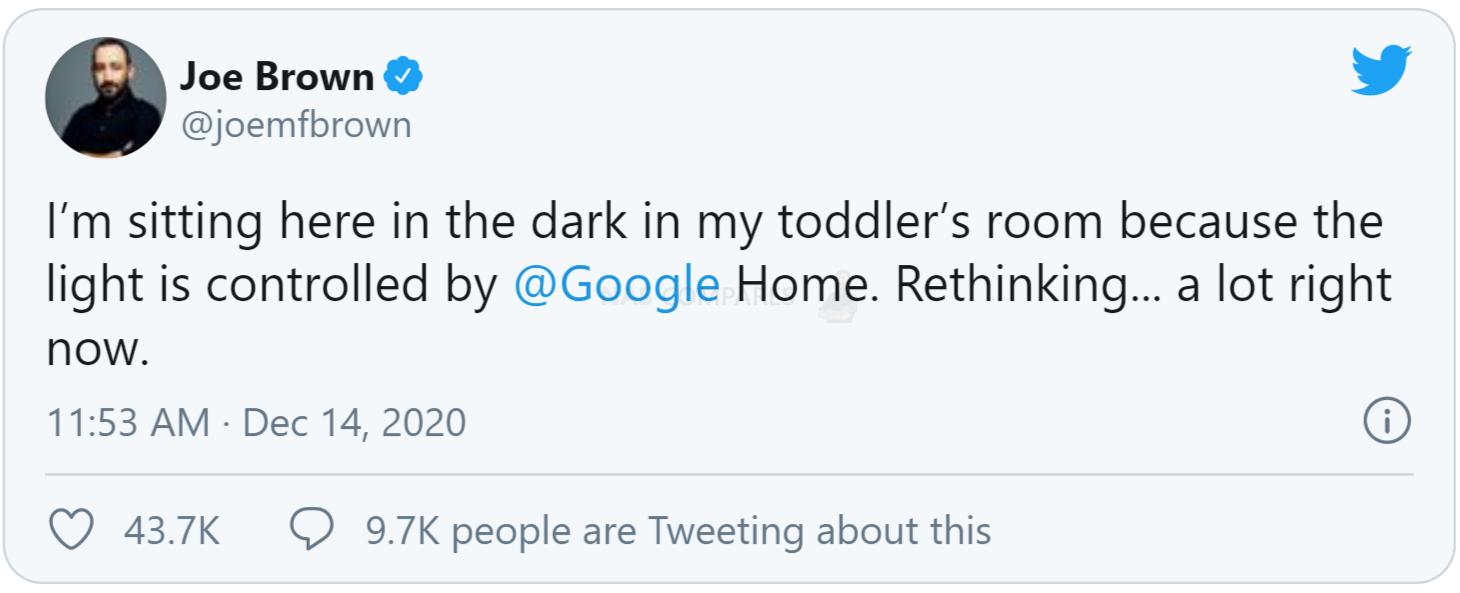
Nevertheless, as per the focus of this article, the real matter of concern here is about accessing your data and having ultimate control. Having your data on a cloud service is not necessarily a bad thing and, when used as a means of a multi-tiered backup/storage strategy, it is very useful indeed. But for businesses that rely on cloud storage for their client data, multi-site employees sharing a drive online, or running their website, correspondence and commerce around Google cloud, even a short outage results in loss of time, loss of client confidence and a loss of communication throughout their business. Moving away from Google (and other cloud storage providers) towards a personal/business NAS server is not just about having your data on your own terms, but also about having bespoke access via the internet AND the network, something that your just won’t get to the same degree from a cloud provider – which means you always have access, even when your internet connection is severed.
So today I want to talk about the SIX key deciding factors that most home and business users will need to consider when deciding on switching from Google Cloud to a NAS Drive. These will cover Price, Scalability, Security, Performance, Sharing and Deletion. A NAS drive is not for everyone and this post is NOT about saying which one is ‘better‘, it is about which one is ‘better for you‘.
Quitting the Cloud for NAS – The Price
Probably one of the most popular long-term benefits of switching from third-party cloud services to network-attached storage is to do with saving money. That isn’t to say that is expensive, as in fact on day 1 most 3rd party cloud providers are either free or as low as £2.50 a month for hundreds of gigabytes of storage. With complete NAS systems often costing several £100 on day 1, they will always be considered to be the far more expensive option. However, with each passing month, much like the tortoise and the hare, the gap between NAS and cloud services closes dramatically and as the months turn to years you will find that not only have you spent more on cloud than you would have spent on a NAS on day 1, but also that unless you intend to continue paying Google Drive, Dropbox and OneDrive forever, you are going to need to buy some storage space anyway or risk losing your data forever. Consequently, in the long-term, it makes considerably more sense in terms of price to buy a NAS than third party cloud services. Though much smaller businesses and home users may be less convinced.
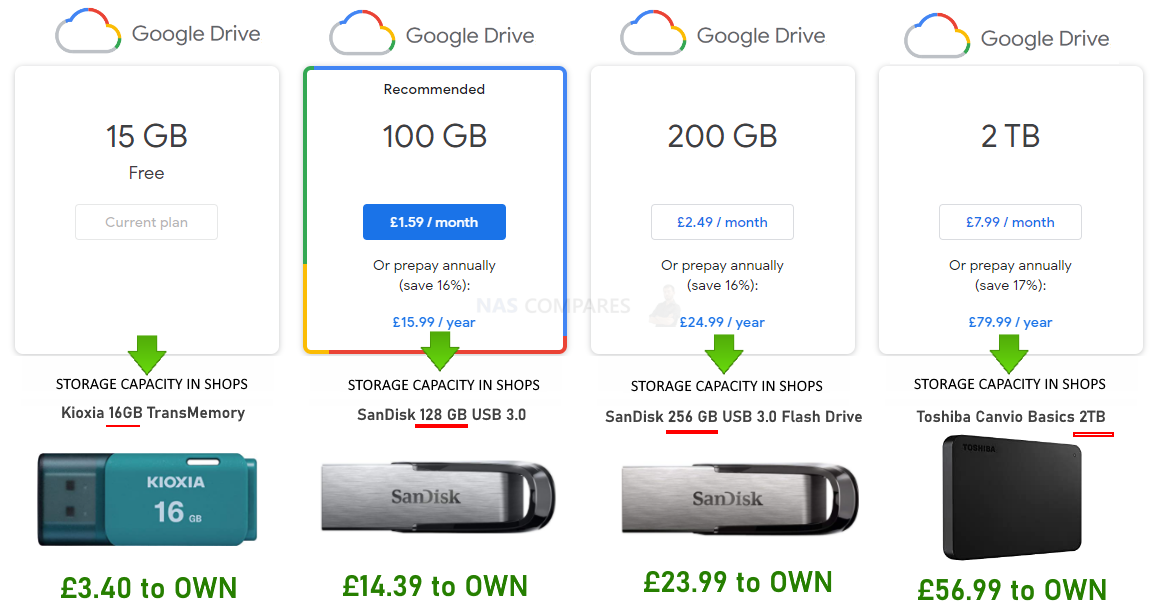
Quitting the Cloud for NAS – Storage and Scalability
For those of you that have used free third-party cloud storage space or even purchased minor charge subscription cloud space, you’ll know that generally the amount of space you have is quite limited. You can always pay extra to add more space on, however, the general price of cloud storage is around £50 a year for a terabyte of space. Now, in real terms, you can purchase a physical 1 terabyte hard drive or external USB 1TB hard drive for around £30-40. So even if you ignore NAS and just buy an external hard drive, it has already saved you money before the end of the first year of ownership. However, most users use cloud services due to the benefits of remote access and shared storage. Even then, the cost of even a modest one 2-Bay desktop NAS and 1TB of storage will still only cost you around £200. However, the true benefit in terms of storage and scalability of a NAS is that you are able to have significantly more storage capacity at your fingertips, with the maximum SATA drives in the market today allowing even a 1-bay NAS to support up to 18 terabytes of space. this is further improved by the fact that many systems support both RAID and multi SATA bay architecture and therefore allows scalability of your storage to break into the hundreds of terabytes quite easily. This level of total storage capacity and the heights of its scalability is unmatched by cloud services. Only the highest tiers of cloud provider storage (generally considered ‘blob’ storage and at that point begin to factor ‘cost vs time’ usage into the equation.
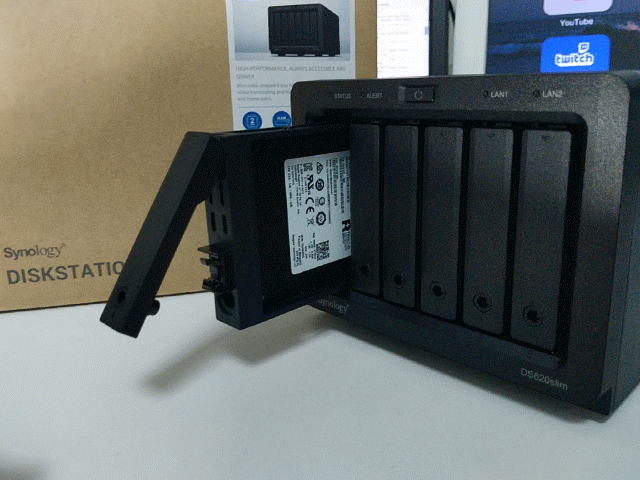
Quitting the Cloud for NAS – Security
It is often observed that cloud services backed by the likes of Microsoft and Google are some of the most secure in the world, as well as being some of the safest, with your data being mirrored across multiple server locations. However, in the majority of cases, a NAS can be made significantly more secure and unique in its credentials than any cloud platform. The reason for this is simply that Google Drive and Dropbox are just too big a target and because they are ubiquitous across home and business markets, this security is is under heavy observance by hackers. Additionally although though cloud and NAS both support encrypted transmissions, unique logins and two-step verification, the third-party cloud services are more widely spread worldwide and it allows a wider degree of intrusions to be found by thousands of users with near-identical set-ups. A NAS users will all too often be fantastically unique in the approach taken by the administrators to ensure security. Additionally, that NAS lives behind unique end-user firewalls and switch architecture that has limited scope for access to unknown users outside of the NAS network. Ultimately, both NAS and the Cloud have fantastic security layers available, but a NAS allows much more unique-to-user security options that can live behind their already layered home/office environment. Lastly, if you are especially concerned with security, a NAS has the simple yet undefeatable option to simply disconnect it from the network (ie remove the network cable) if needed, or arrange scheduled power on/off – a NAS server in your physical environment gives you increased control on the final questions of severing access locally and via the internet.
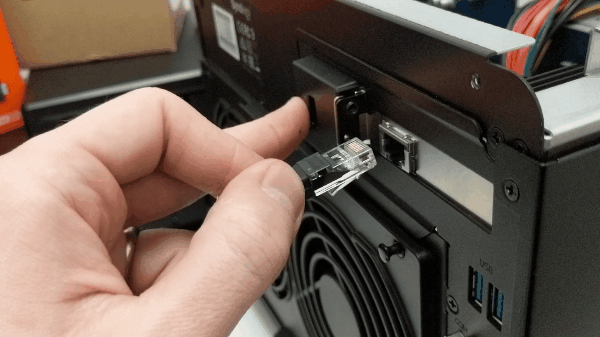
Quitting the Cloud for NAS – Performance
The performance difference between a NAS drive and the cloud is one that varies based on how you use and want to interact with your data. Outside of intelligently managed hybrid storage systems only found in business, the majority of users that rely on third-party cloud services are heavily dependent on their internet connections, both the upload and the download speeds. If you are based in a location with poor internet coverage or are using client devices that depend on cellular mobile internet access, then the speed of accessing your data on third-party cloud is going to be much slower. Most cloud services have attempted to get around this by utilising cached data storage on client devices, which in short means that a percentage of space on your phone, PC, Mac and more is occupied by data copied from the cloud. This is considerably more beneficial to more frequently accessed data than it is to more random or incidental data access, and even then still requires each user that is sharing the data to be connected to the internet to ensure that changes and updates are applied to the core files. A NAS system on the other hand with, network access between client and host (ie in-house) is considerably faster, typically starting at 100MB/s per second and can affordably be upgraded to 1000MB/s (i.e 10G) and more quite easily. For those that want to edit files remotely without them taking up room on a local computer, such as photo and video editors, a NAS is considerably easier to edit files on than the cloud in house. Additionally, when a NAS is accessed over the internet (ie remotely, as you would with a 3rd party cloud) the access speed is near enough identical. Additionally, a NAS allows numerous applications to be installed in much the same way you would a desktop computer or mobile device, allowing you to host multimedia services, email servers, business class databases and virtual machines from a NAS that is frankly impossible on additional third-party clouds and only possible using enterprise-grade blob storage (such as AWS) professional-grade cloud servers. Even then, it is needed in conjunction with management software like VMware (which, again, a NAS can also do).

Of course, most businesses have already started leveraging the benefits of both cloud and systems to create hybrid storage systems that utilise the ease of remote access available on the cloud and the performance, scalability and redundancy available from NAS. This system of hybrid storage (also referred to as a Cloud Gateway) is known as Hybrid Mount on the QNAP NAS platform and HybridShare on the Synology NAS architecture. Synology even provide a cloud service in-house (Synology C2) that allows you to still access the advantages of each storage tier under the one brand.
Quitting the Cloud for NAS – Deletion and Sharing
Finally, there is the peace of mind with a NAS that the data on the device is not going to be shared with anyone you don’t want it to be. Once data is on your NAS, you can choose which users you want to allow configurable access to it. Data on cloud services like Google Drive and Dropbox have their sharing options configured just as well, however as the data is on third-party public cloud servers, you have no real way to prevent the cloud provider using your data for analytical or promotional means. Of course, I don’t mean that your data is being looked at by a human being at Google.com, but more that your data can be used for research, facial recognition and ultimately to provide the brand with analytical advantages to further their industry position. Even a casual glance at the terms and conditions of any cloud provider shows you that the brand reserves the right to use your data to improve their services (or terms to the gist of this). All those handling particularly sensitive or confidential data, this can be quite a worry. Some might argue that access to the photos and their associated metadata can be as intrusive as accessing your emails.
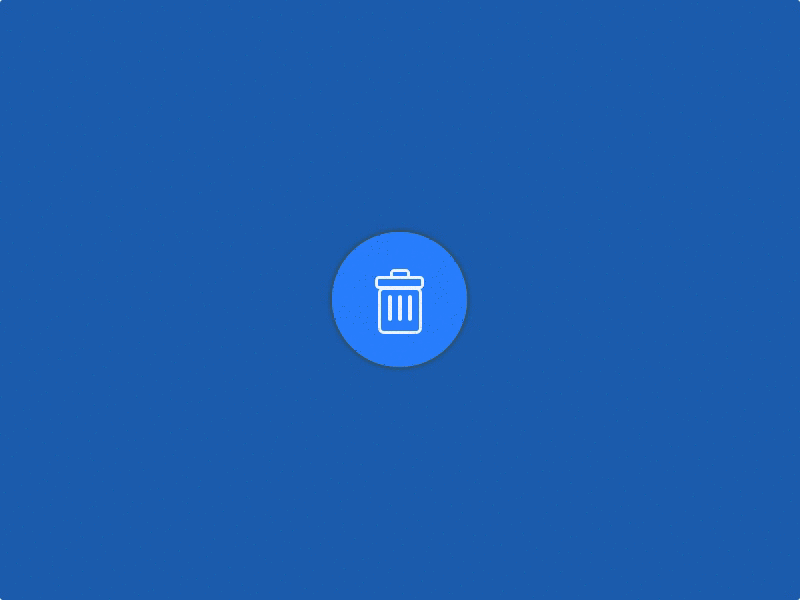
Then you have the subject of deletion. A NAS, much like a computer file system, has an optional recycle bin and even if you delete files from the NAS and the recycle bin a rather enterprising data recovery expert may be able to to get hold of the drive and recover those files. Even if you disable the Recycle Bin option, recover of data on a NAND cell here, or a mechanically plastered hard drive still exists. So, why is a NAS any more secure in terms of deletion than the cloud? Well, a NAS is also a physical item in your home or office, as are the hard drives or SSD inside. So if you really want to delete and destroy files, you literally can with a hammer, a bonfire, a magnet or any one of a number of physical means of destruction. Whereas data on third-party cloud devices will always leave you with the tiniest doubt that the data is not truly deleted and given that the majority of cloud providers have numerous server farms that purely exist to backup and copy the others, this only further reinforces the idea that your data may not be truly deleted forever. It may seem a bit caveman to smash a hard drive two pieces with a hammer, but at least a NAS in your physical environment allows you to make that choice and have that peace of mind.
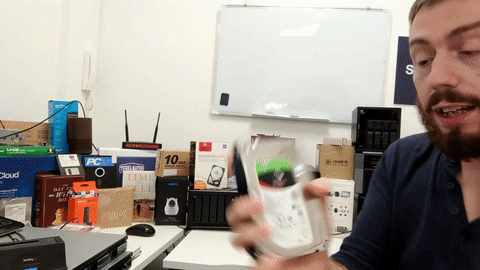
Quitting the Cloud for NAS – Conclusion
So, what can we take from today’s article? Is a NAS perfect? No, of course not. As soon as you go down the road of storing data in a remote access way, whether it is with 3rd Party Cloud services like Google and DropBox or a NAS drive, you are going to have to consider matters like cost, security and reliability. The reason cloud is so cheap and user-friendly is that it lacks to control, performance and longevity of a NAS. Both platforms have their pros and cons (I use both), but as a primary storage choice, I will always recommend a NAS server for both Home and Business above 1TB – and even for those overly reliant on the Google ecosystem (Gmail, Google Photos, Google Docs, etc), you do not have to give up your G Suite services when opting for a NAS, as you can always choose individual services from each side of the fence and create a perfect hybird/mixed software and storage system for your needs. So, to sum up, the advantages of moving from a Google cloud drive for your photography and towards a network-attached storage device for your data is actually quite straightforward, but there are advantages and disadvantages that many users will need to know before proceeding with choosing between them. Such as:
So, to sum up, the advantages of moving from a Google cloud drive for your photography and towards a network-attached storage device for your data is actually quite straightforward, but there are advantages and disadvantages that many users will need to know before proceeding with choosing between them. Such as:
Google Services and Google Drive Advantages
- Much lower initial startup cost
- Software and and and already included on your Android device
- More user-friendly at on the outset
Google Services and Google Drive Disadvantages
- Considerably higher long-term cost
- Questions surrounding how your data is used by Google in and outside of other applications
- Storage space is shared amongst all other Google appliances, leading to potential security holes and potential loss of service when capacity is filled
Whereas, if you are considering the move to NAS from Google, then you should know that there are still going to be the odd difference you should be aware of. Such as:
![]()
Synology & QNAP NAS Advantages
- Much more bespoke and customised in its security
- Wide range of storage options to scale the requirement and budget
- A complete data storage solution, not just a backup
- The much lower long-term price tag
- Storage is much more individually tailored for scaling and access
- Create Multiple Backup layers, as well as lower resource-hungry failsafes such as Snapshots
Synology & QNAP NAS Disadvantages
- The higher initial price tag
- Requires more setup time
- Requires a small amount of it knowledge, and I really do mean a small amount
So, as you can see the difference between Google data storage and storage on a NAS although similar, have very clear distinctions and benefits. Ultimately, a NAS is the better long-term choice than a subscription-based cloud storage service that you will eventually need to download your data from at one point anyway. Also, be sure to check out the article below about Google Photos and NAS Photo storage for a good look at how each NAS brand supports day to data storage and archival backups in 2021.
Click Below to Read More
📧 SUBSCRIBE TO OUR NEWSLETTER 🔔🔒 Join Inner Circle
Get an alert every time something gets added to this specific article!
This description contains links to Amazon. These links will take you to some of the products mentioned in today's content. As an Amazon Associate, I earn from qualifying purchases. Visit the NASCompares Deal Finder to find the best place to buy this device in your region, based on Service, Support and Reputation - Just Search for your NAS Drive in the Box Below
Need Advice on Data Storage from an Expert?
Finally, for free advice about your setup, just leave a message in the comments below here at NASCompares.com and we will get back to you. Need Help?
Where possible (and where appropriate) please provide as much information about your requirements, as then I can arrange the best answer and solution to your needs. Do not worry about your e-mail address being required, it will NOT be used in a mailing list and will NOT be used in any way other than to respond to your enquiry.
Need Help?
Where possible (and where appropriate) please provide as much information about your requirements, as then I can arrange the best answer and solution to your needs. Do not worry about your e-mail address being required, it will NOT be used in a mailing list and will NOT be used in any way other than to respond to your enquiry.

|
 |


